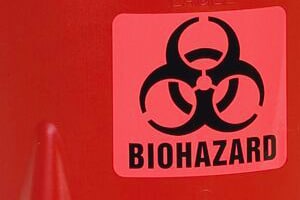 A hazardous communications plan (HAZCOM for short) is a comprehensive document which outlines vital information regarding a company’s safety practices, chemical labeling, training and potential workplace hazards.
A hazardous communications plan (HAZCOM for short) is a comprehensive document which outlines vital information regarding a company’s safety practices, chemical labeling, training and potential workplace hazards.
Many companies overlook the importance of a HAZCOM plan, leaving them vulnerable to OSHA fines and sanctions. A HAZCOM plan is more than a luxury; it’s a necessity that companies need to include in their daily operations. But what exactly is a HAZCOM plan? And what information should it include? To learn the answers to these questions and more, keep reading.
What is the purpose of a HAZCOM plan?
There are two primary functions of a HAZCOM plan:
1) To provide vital information regarding potential hazards and safety in the workplace. If an employee has a question or concern regarding workplace safety, they can refer to the HAZCOM plan for more information. It’s focus is to communicate safety information to employees and individuals (hence the name).
Some HAZCOM plans are relatively short, while others are more complex; the size varies depending on the company’s size, industry and workplace. Small companies operating out of a small shop will naturally have shorter HAZCOM plans than some large company with 100+ employees working in an industrial factory, so keep this in mind when creating your HAZCOM plan.
2) To show an EPA and/or OSHA compliance offer. A second function of the HAZCOM plan is to provide a general outline and guide for EPA/OSHA compliance officers. If an officer shows up to your place of business, one of the first things they will likely ask to see is the HAZCOM plan. And if you don’t have one ready, you could end up in hot water before the inspection even begins. Thankfully, creating a HAZCOM plan is a fairly easy and straightforward process.
What To Include In a HAZCOM Plan
- HAZCOM Policy/Purpose – Statement detailing the purpose of your HAZCOM plan; eg: to create a safer work environment while reducing employee accidents and injuries.
- Responsibility – Define administrative roles in your company along with their respective duties and responsibilities.
- Materials and Inventory – Detailed list describing the types of chemicals, materials and inventory included your workplace.
- Labeling – How your company labels its hazardous chemicals in the workplace.
- Training – Describes your company’s employee training program.
- Compliance – Actions your company takes to remain EPA/OSHA compliant.
For more information on how to create a HAZCOM plan, check out the official OSHA website.